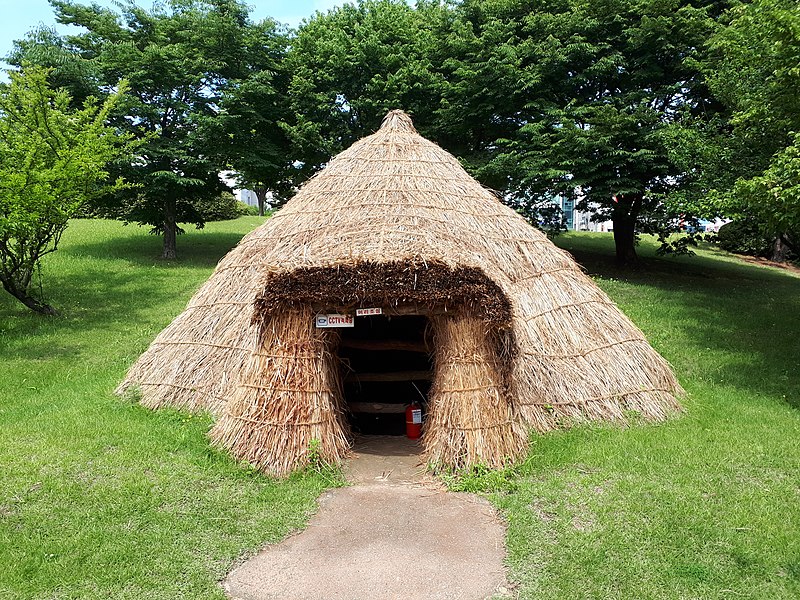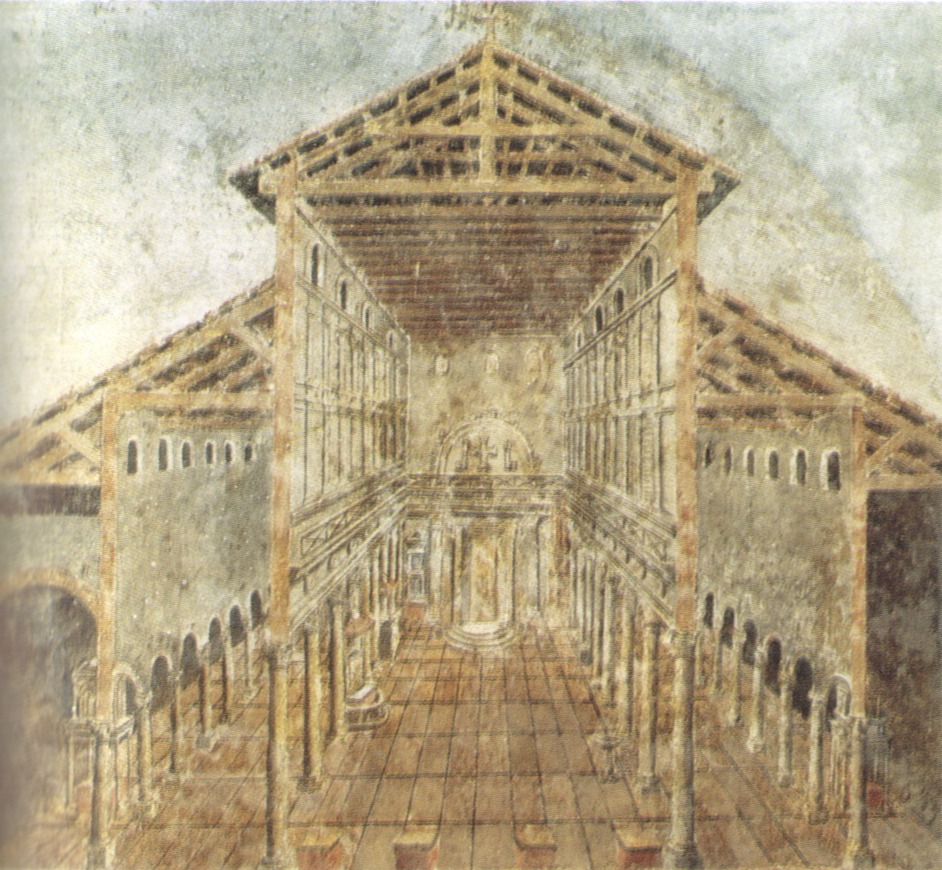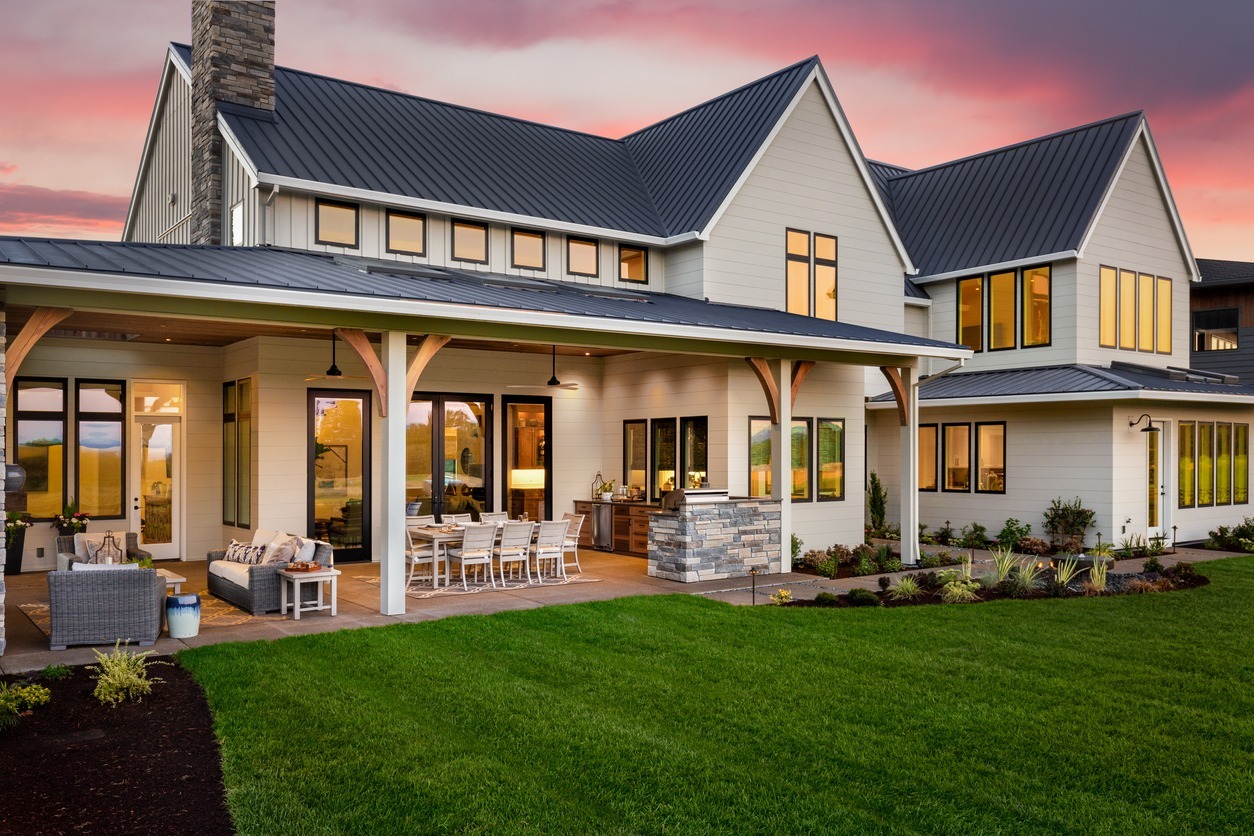All humans need shelter to stay protected from the forces of nature. You know the old saying, “Food in my belly and a roof over my head”? It reminds us that these are really important for survival. One might think that ancient humans either slept outside beneath the stars or took shelter in caves to stay safe from the weather. But, interestingly, archaeologists have discovered proof of our ancestors using roofs made from different things like animal parts, wood, stones, and clay, very early on.
Throughout our history as a society, people have developed innovative ways to create strong shelters for all types of environments. Stroll through the aisles of home improvement stores, browse online stores, and you’ll come across a wide variety of roofing materials that are used nowadays.
While asphalt shingles are commonly seen in many places, traditionally sophisticated ceramic tiles are now easily accessible. Also, roofs made of tough but lightweight metal have existed for a while. Even today, they remain a leading choice and are becoming more and more popular. But how did we end up with a wide range of options?
Let’s take a look at the lesser-known story of roofs and how they developed into sturdy, weatherproof protection for our homes.
Early Human Shelters
Since the earliest days when humans sought shelter, the need for some form of roofing has been essential. While early humans took refuge in caves, archaeological findings reveal that they also constructed temporary shelters outdoors for hunting and gathering. As societies shifted towards agriculture, basic settlements emerged with primitive shelters.
During the Paleolithic and prehistoric periods, humans used a variety of natural materials to create dwellings. Archaeological records display structures built from wood, reeds, clay, and animal hides across different regions worldwide. As cultures developed, communities adapted construction techniques to match their local climates. These architectural practices became deeply rooted in their cultures, and many traditions still prevail.
In tropical regions, palm fronds were a sensible and lightweight option, and they continue to be favored to this day. The Plains Indians crafted their tipis from animal skins, such as buffalo and deer hides, which they hunted. Mud and straw roofing were commonly employed in various parts of ancient Africa. Wood was occasionally used, too, often combined with other materials like mud or woven fibers, which were layered over to complete the structure. This construction approach was often applied to primitive dwellings like wattles and daub huts.
The first known instance of roofing dates back to 40,000 BC in Siberia, where woolly Mammoth skins were used. Human architectural evidence from 25,000 to 30,000 years ago showcases tent-like structures constructed from local materials. These early settlers employed methods like securing branches with stones and covering them with mud-coated reeds to create rudimentary roofs. Archeological findings also indicate the use of Mammoth bones and tusks lashed together with animal hides as coverings.
Around 8000 BC, the advent of agriculture led to permanent settlements and the transition from basic tents to round houses, forming early towns. These houses were made from sun-baked mud bricks with rounded edges, featuring conical roofs constructed from branches and mud. By 6500 BC, some regions started using brick or stone for roofs. While circular houses remained popular, rectangular structures with straight walls and windows emerged.
Tiled roofs were first recorded in China around 3000 BC and were also present in Greece and Babylon between 3000 – 2000 BC. The Romans introduced a version of Greek tiles to Britain around 100 BC, while thatched roofing appeared in the country by 735 AD, despite earlier use in Oriental architecture.
Roofing in Ancient Greece and Rome
The impact of the ancient Greek civilization on modern history extended to the various methods of construction used throughout its different phases. Early Greek homes were initially constructed using dried clay bricks that needed protection from rain. To counter this, the Greeks designed houses with extended eaves that directed rainwater away from the walls. As time progressed, they shifted to using stone for construction instead of clay, leading to stronger structures capable of supporting more substantial roofs.
Thatched roofs were prevalent during this period, but the risk of fires prompted a transition. Between 700 and 650 BC, Greek builders adopted less flammable roof tiles, a departure from traditional thatched roofs. With this innovation, the need for extensive eaves lessened, as stone walls demonstrated greater moisture resistance than dried clay tiles.
Greek building techniques influenced Ancient Rome. The Romans adopted various methods from Greece, including the imbrex and tegula roofing system. Tegula tiles, resembling small half-pipes, and imbrex tiles, flat squares, were used. The imbrex tiles formed a crisscross pattern on the roof, while the curved tegula tiles covered joints to prevent water infiltration. Over time, this roofing method evolved and became a hallmark of construction in Mediterranean civilizations.
The Roman Empire further developed these techniques, especially for temples and public structures. While the Romans had access to superior building materials and created more refined edifices than the Greeks, the visual influence remains evident and enduring.
Ancient Roofing in Asia
Early Asian roofing advancements preceded those in Britain, utilizing thatched and tiled systems. Wooden construction dominated due to its abundance and earthquake resistance. In ancient Japan’s Jomon period (1300 BC – 300 BC), dwellings with earth floors over wooden foundations and straw-thatched roofs were observed.
The Middle East embraced domed roofs after The Dome of the Rock (691 AD) construction, influencing regional architecture.
Local resources guided architectural evolution. In ancient Egypt, mud brick mastabas evolved into stone structures and then pyramids. They created homes with flat roofs for sleeping as ventilation against its hot and dry climate, while dwellers sought ventilation by sleeping under cloth canopies atop the flat roofs.
In the regions surrounding the Yellow River and its tributaries in ancient China, traditional dwellings exhibited similar wooden and thatched roofing systems found in various parts of the world. During the Zhou Dynasty, spanning from 1046 to 256 BC, stone and brick emerged as the primary construction materials. Over time, the Chinese transitioned to utilizing clay roofing tiles.
The Chinese method of tile roof construction shared some resemblances with the imbrex and tegula tile systems of ancient Greece and Rome. However, the Chinese approach has a difference. The majority of the roof’s surface was covered with flat tiles, while curved tiles were placed at the roof’s edges to channel water away from the structure. Progressively, the Chinese refined this system by increasing the overlap between each layer of tiles. By the time of the Qing Dynasty, this overlap had reached around 70%.
Ancient Chinese societies faced seismic activity, influencing their architectural choices. Due to earthquake concerns, early Chinese civilizations leaned towards single-story, elongated dwellings and public structures. As a result, gable and hip roof designs gained prominence, evolving consistently through the rise of the Song Dynasty.
In a distinctive departure from load-bearing walls, ancient Chinese construction relied on a pillar support system. This innovative approach led to the creation of remarkable roofing techniques like the “dugong” or cap-and-stone bracketing system. By utilizing pressure and tension, this technique effectively supported roof structures, showcasing the ingenuity and adaptability of ancient Chinese builders.
Early Roofing in Britain
Around 735 AD, thatched roofing gained popularity in Britain and was also employed in equatorial regions like Hawaii, Bali, and Fiji. African countries, including Kenya, used sugar cane leaves for thatching. A significant change occurred in the 12th Century when King John mandated the replacement of thatched and reed roofs in London with clay tiles to prevent fire spread. Following the Great Fire of London, thatched roofs were prohibited in the city, and clay tiles became the prevailing roofing material.
Clay tiles were already introduced to Britain in 100 BC and only experienced a resurgence in the 12th and 13th Centuries. Clay resources were geographically limited, typically found near rivers, leading to its dominance in specific regions. For instance, clay from the Thames facilitated the reconstruction of London’s roofs after the 1666 Great Fire.
Medieval and Renaissance Roofs
During the Medieval and Renaissance times, roofs became more than functional – they featured stunning designs that defined the architecture of the era.
The Gothic architectural style, prominent from the 12th to the 16th century, revolutionized roof design. Cathedrals and churches in Europe featured soaring pointed arches, ribbed vaults, and flying buttresses. These intricate structural elements allowed for larger, more complex roofs with increased height and grandeur.
Medieval churches often included clerestory windows, which required higher roofs to accommodate the additional wall space. This led to the use of ribbed vaulting, a system of arched stone ribs that supported the roof and distributed weight more effectively. These roofs provided both structural support and ornate aesthetics.
Roofs in the Medieval Era often feature decorative features like pinnacles, crockets, and finials. These elements added to the visual appeal and served as functional aspects to direct rainwater away from the building.
During the Renaissance, the classical architectural principles from ancient Greece and Rome experienced a revival. Roofs reflected this influence through the use of pediments, columns, and symmetrical designs. The roofs of Renaissance buildings often emphasized balance and proportion.
Domed roofs were also popular during the era – used in religious and secular buildings. Domes became a symbol of grandeur and were used to crown important structures like cathedrals, basilicas, and palaces. The dome of St. Peter’s Basilica in Vatican City, designed by Michelangelo, is a notable example.
In contrast to the soaring Gothic roofs, Renaissance architecture sometimes featured flatter or low-pitched roofs. These roofs emphasized horizontal lines and were often covered with terracotta tiles.
Industrial Revolution Leading to the Rise of Modern Roofing Materials
The Industrial Revolution introduced new roofing materials like iron, steel, and asphalt. These materials allowed for larger and more complex roof designs. The use of factory-produced materials also led to greater standardization and efficiency in roofing.
By the 19th century, wood and slate shingles and clay roof tiles were being mass-produced and were the most common choice of roofing material. The first asphalt roofs were also laid in the 19th century – and quickly became popular due to their comparatively low production costs.
But it was only at the turn of the 20th century when asphalt shingles were invented. In 1901, Henry Reynolds from Grand Rapids, Michigan, invented asphalt shingles. Asphalt, a composite comprising a cellulose or fiberglass base adorned with granules such as mica, oyster shell, slate, and clay, are sealed with resins and polymer-modified bitumen. It became popular during the 1920s due to its remarkable endurance, cost-effective production, and straightforward installation. By 1939, a staggering 11 million of these shingles were being manufactured. In present times, asphalt shingles are still the most dominant shingle type in the United States, adorning over 75% of American households.
Meanwhile, in Europe, advancements in tiling technology led to the importation of tiles from Europe in the 20th century. The British clay pantile industry diminished by the 1950s, struggling to match the quality of foreign tiles.
Concrete tiles gained prominence during this period in Britain. Although they initially struggled to gain traction when introduced in the 1920s, they surged in demand during the significant post-World War II rehousing effort. While Europe focused on automating clay tile production, Britain invested in concrete tile manufacturing. By the 1960s, concrete tiles were produced in larger, more uniform sizes, making installation easier.
From the 1970s, improved processes in Europe led to the production of more consistent clay tiles and slates. Their use steadily increased in Britain, challenging the dominance of concrete tiles. Cheaper and diverse slate and tile options from abroad further contributed to this shift.
Asbestos tiles emerged as an additional roofing choice available during the 70s. Simultaneously, the same era witnessed the rise of green roofing as a popular alternative. This trend originated in Germany, spurred by exploring such benefits of this kind of roof during the oil crisis.
Contemporary Roofing History and the Future
In the contemporary era, roofing solutions have evolved to offer enhanced reliability and security. These modern roofing options seamlessly blend elements from the past with innovative trends. Present-day homeowners prioritize aesthetics, seeking enduring, aesthetically pleasing, and environmentally conscious materials that are budget-friendly.
As you observe roofs down the streets and in the cities, you’ll encounter a diverse array of roofing choices, ranging from classic asphalt shingles, clay and concrete tiles, and timeless slate to more progressive options like metal roofing and solar tiles. Among all building components, roofing stands out as particularly critical, ensuring unparalleled importance in the overall structure.
With the introduction of advanced transportation systems, cost-effective materials, and automated production methods, the spectrum of roofing options for contemporary buildings has become endless. While there is a recent inclination to revert to traditional, locally-sourced roofing materials that harmonize with the surroundings, it isn’t always practical.
The future holds promising new technologies that could reshape roofing in the next 50-100 years. Innovations in glass, polymers, and tiles designed to absorb smog may revolutionize roofing aesthetics and function. Furthermore, the future will likely witness the ascendancy of eco-friendly materials as Europe strives for carbon neutrality by 2050. Anticipate the emergence of sustainably-sourced materials, with the potential for energy-generating tiles to be a groundbreaking development in the years that lie ahead.






